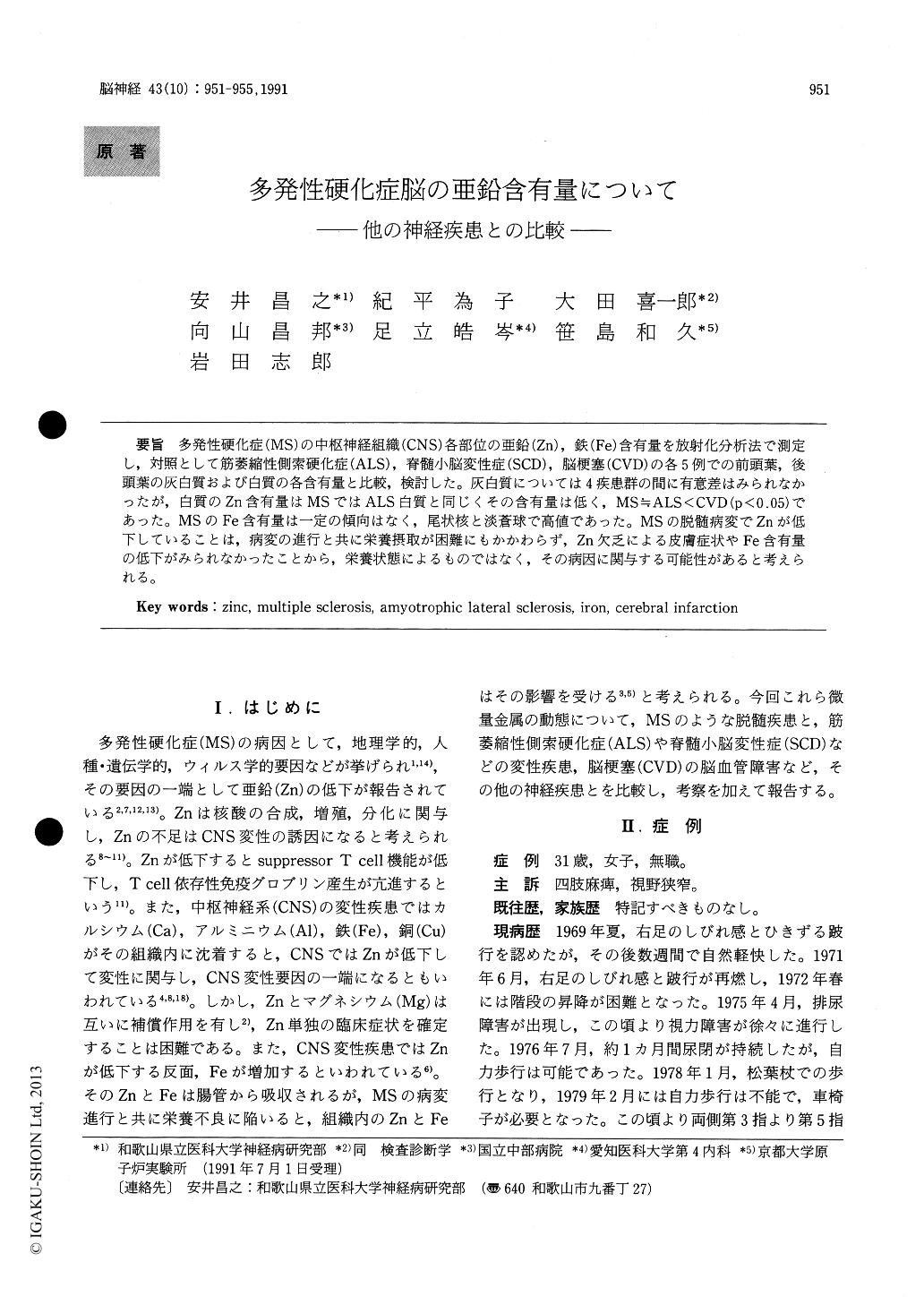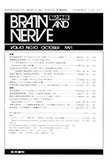Japanese
English
- 有料閲覧
- Abstract 文献概要
- 1ページ目 Look Inside
多発性硬化症(MS)の中枢神経組織(CNS)各部位の亜鉛(Zn),鉄(Fe)含有量を放射化分析法で測定し,対照として筋萎縮性側索硬化症(ALS),脊髄小脳変性症(SCD),脳梗塞(CVD)の各5例での前頭葉,後頭葉の灰白質および白質の各含有量と比較,検討した。灰白質については4疾患群の間に有意差はみられなかったが,白質のZn含有量はMSではALS白質と同じくその含有量は低く,MS≒ALS<CVD(p<0.05)であった。MSのFe含有量は一定の傾向はなく,尾状核と淡蒼球で高値であった.MSの脱髄病変でZnが低下していることは,病変の進行と共に栄養摂取が困難にもかかわらず,Zn欠乏による皮膚症状やFe含有量の低下がみられなかったことから,栄養状態によるものではなく,その病因に関与する可能性があると考えられる。
The posible role of trace elements in a patho-genesis of central nervous system (CNS) on degene rative and demyelinating diseases has been sug-gested.
Simultaneous measurements of Zinc (Zn) and iron (Fe) concentration in CNS were undertaken by neutron activation analysis in CNS tissues : a patient with multiple sclerosis (MS), five patients with amyotrophic lateral sclerosis (ALS), five with spinocerebellar degeneration (SCD), and five with cerebral infarction (CVD) in non-invasive area of CNS as control. Although Zn and Fe concentration were present in white matter and gray matter of CNS in each disease, 1) Zn concentration showed no special pattern in gray matter among four diseases, but decreased more in white matter of MS and ALS than that of CVD (p<0.05) ; 2) Fe concentration in gray matter of SCD increased more than that in CVD (p<0.05) , but Fe concentration in white mat-ter of CVD was increased more than that of ALS (p<0.05) ; 3) Fe concentration of CNS in a patient with MS was not notable except for high Fe concen-tration in caudate nucleus and globus pallidus.
The demyelinated pathological area in CNS ofMS showed a decrease in Zn level but no change in Fe level. These results indicate that low Zn con-centration in CNS tissues of MS seemed to be res-ponsible for CNS demyelination, but not forundernutrition due to poor conditions of a patient with MS. It seems that Zn might be one path-ogenetic factor of MS, but the action of Fe in MS can not be ruled out.

Copyright © 1991, Igaku-Shoin Ltd. All rights reserved.


